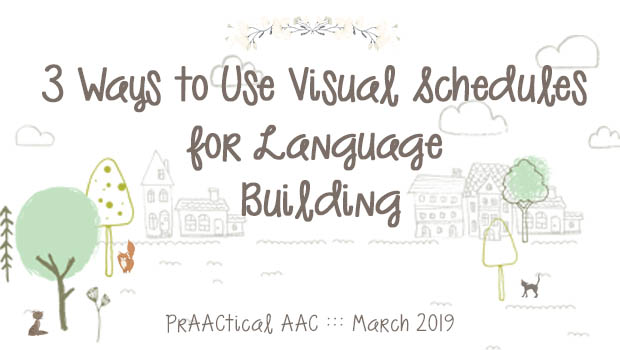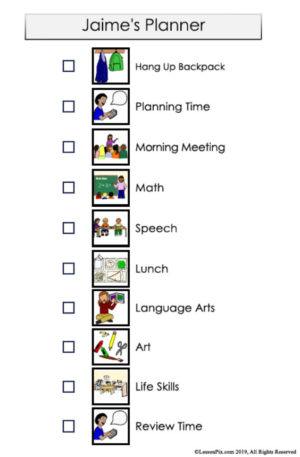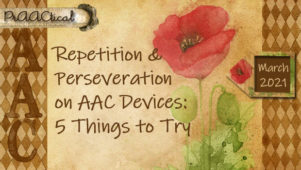3 Ways to Use Visual Schedules for Language Building

Visual schedules are powerful tools for supporting comprehension, reducing anxiety, and helping learners with AAC needs become more independent. They can also be used to build receptive and expressive language. To do that, though, the use of daily or mini/task schedules has to be part of an interactive experience, not an independent activity. If you’re willing to use schedules for language building, here are some ideas to consider incorporating.
- Sentence Building: This is an easy one. If you are working with an AAC learner who communicates primarily with one word/symbol at a time, slow down and take time to model short sentences every time you check the schedule together by adding a verb (e.g., GO to LifeSkills; EAT lunch, PUT AWAY your backpack). Once you’ve established that routine, you can pause to elicit those same sorts of
 sentences from the AAC learner.
sentences from the AAC learner. - Verb Tense: As you use the schedule during the day, slow down a bit and take time for interaction. As you check the schedule, you can model past tense (e.g., You ATE lunch; We’re finishED with Morning Meeting; We WENT to Music). You can also model future tense as you talk about upcoming activities (e.g., We WILL GO outside for recess; You WILL EAT lunch). Once these quick conversations become an expected part of the ‘check schedule’ routine, you can pause to create opportunities for the learner to use these verb tenses as they tell you about things they just completed or are about to do. Consistency helps here.
- Personal Narratives: Being able to tell others about your life experiences isn’t just a valuable language skill, it’s a safety issue. The unfortunate reality is that when you can’t tell others what has happened to you, you are at increased risk for mistreatment or abuse. Simply put, we can help AAC learners be less vulnerable by teaching them how to tell others about their lives. Schedules can be a great mechanism for building this skill, particularly when we develop consistent routines of reviewing the schedule together at the end of the day/session/activity. This doesn’t need to be complicated. Just reserve a little time at the end to tell the story of that time period. Jaime’s teacher makes that a regular part of the schedule, so that he has come to expect some conversation at the end of the day during ‘Review Time.’
Do you use visual schedules as a way to build specific language skills? We’d love to hear about it.
Filed under: Featured Posts, PrAACtical Thinking
Tagged With: language therapy, visual schedules
This post was written by Carole Zangari




